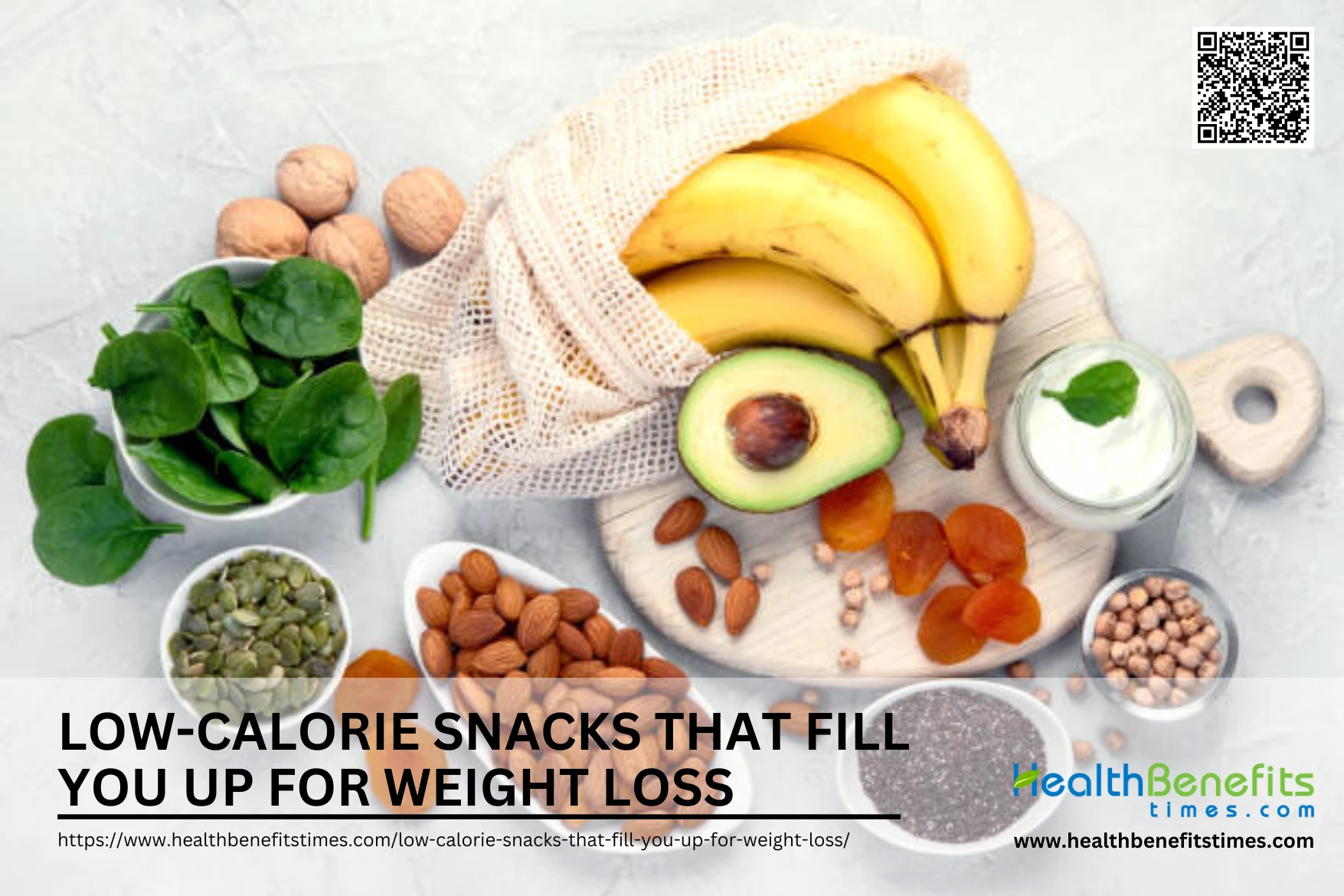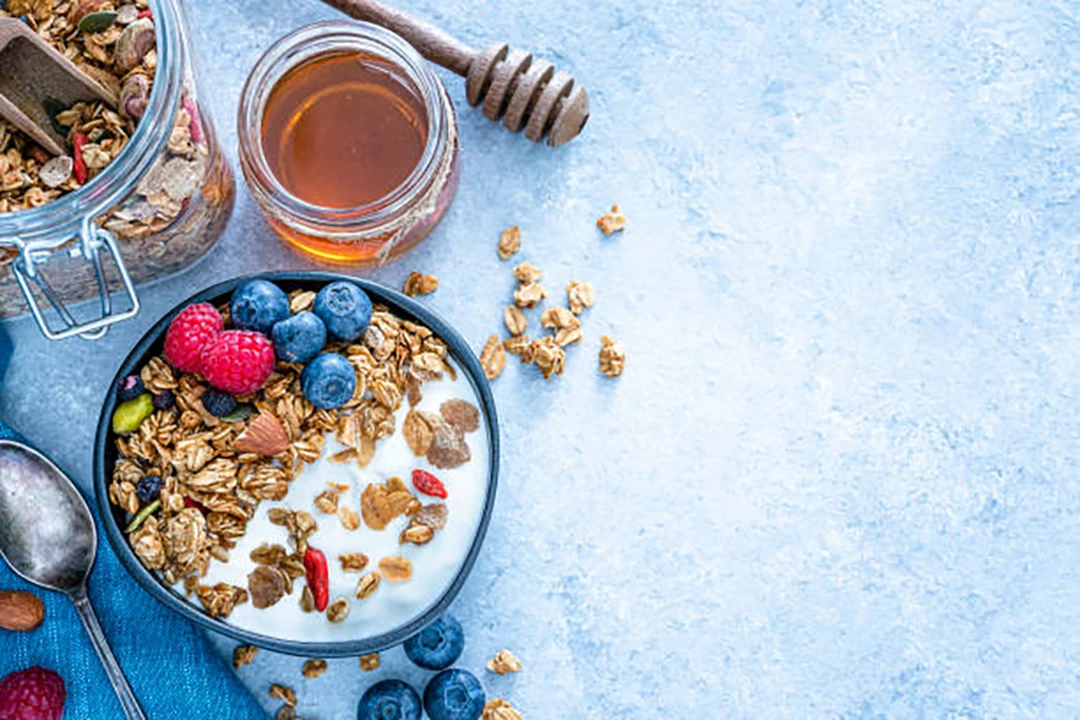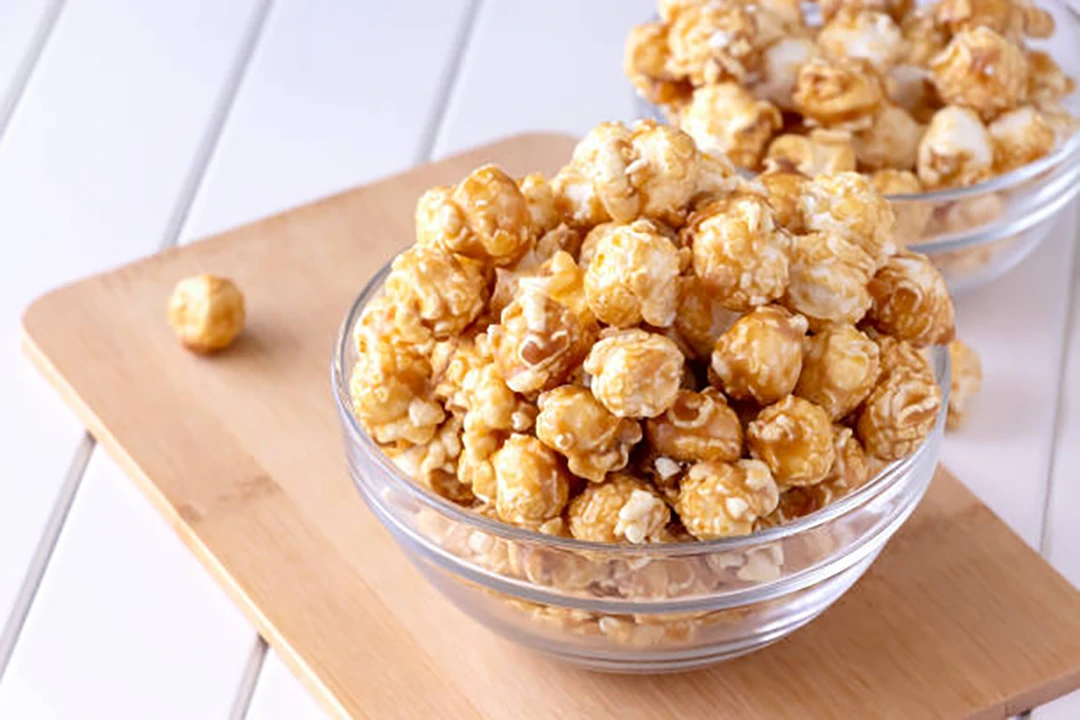
Top Low-Calorie Snacks That Keep You Full
When hunger strikes, choosing the right snacks can make a big difference in supporting your weight loss goals while keeping you satisfied. Low-calorie snacks that are rich in protein, fiber, or healthy fats provide the perfect balance of nourishment and satiety, helping you stay full between meals without adding unnecessary calories. Here’s a list of top low-calorie snacks that are not only filling but also easy to prepare and enjoy.
1. Greek Yogurt + Honey + Berries

Greek yogurt is a protein powerhouse, containing nearly 20 grams of protein per serving, which helps curb hunger and stabilize blood sugar. Adding honey provides natural sweetness, while berries deliver antioxidants and fiber. This snack is nutrient-dense and satisfying for under 150 calories.
2. Air-Popped Popcorn

Popcorn is a high-volume, low-calorie snack, perfect for those who want to eat more without consuming too many calories. It’s packed with fiber, which aids digestion and promotes a sense of fullness, while its crunchy texture satisfies cravings for snacks like chips.
3. Boiled Eggs
Eggs are loaded with protein and healthy fats, making them ideal for keeping hunger at bay. They also contain essential nutrients like choline and vitamin D, which support brain and bone health. A single boiled egg offers long-lasting energy for just 70 calories.
4. Veggie Sticks with Hummus
Crunchy vegetables like carrots, celery, and bell peppers are low-calorie and high in fiber, while hummus adds a creamy texture and plant-based protein. This snack provides a perfect balance of macronutrients for a filling option under 150 calories.
5. Cottage Cheese with Pineapple
Cottage cheese is a protein-rich, low-fat dairy option that satisfies hunger quickly. Pairing it with pineapple not only adds natural sweetness but also provides vitamins C and A, enhancing the snack’s nutritional profile.
6. Apple Slices with Almond Butter
Apples are high in water and fiber, which help fill your stomach and keep you hydrated. Almond butter complements them with healthy fats and protein, creating a snack that’s both nutritious and delicious.
7. Edamame
A third of a cup of shelled edamame is an excellent source of plant-based protein and fiber. Its combination of nutrients helps maintain steady energy levels and prevents overeating later in the day.
8. Roasted Chickpeas
Chickpeas are rich in fiber and protein, making them ideal for a filling snack. Roasting them adds a satisfying crunch and enhances their flavor, creating a savory, nutrient-dense option.
9. Tuna Salad on Cucumber Slices
Tuna provides lean protein that’s highly effective at curbing hunger. Pairing it with hydrating cucumber slices lowers the calorie count and adds crunch, making this snack both refreshing and satiating.
10. Watermelon Cubes
Watermelon is over 90% water, which means it hydrates while filling your stomach. Its natural sweetness satisfies sugar cravings, while its low calorie density allows for larger portions without guilt.
11. Cherry Tomatoes with Mozzarella
Cherry tomatoes are packed with antioxidants, particularly lycopene, which supports heart health. When paired with mozzarella, they create a protein- and calcium-rich snack that’s savory and satisfying.
12. String Cheese and Whole-Grain Crackers
String cheese offers portion-controlled protein, while whole-grain crackers add fiber and carbohydrates for a balanced snack. This combination curbs hunger effectively without adding too many calories.
13. Roasted Seaweed Snacks
Seaweed is naturally low in calories but rich in iodine, a mineral essential for thyroid health. Its crispy, savory texture makes it a satisfying alternative to chips or other calorie-dense snacks.
14. Berries with Dark Chocolate
Berries provide natural sweetness, fiber, and antioxidants, while dark chocolate satisfies cravings for sweets. Together, they make a nutrient-rich snack under 120 calories, perfect for curbing hunger while indulging your taste buds.
15. Rice Cake with Avocado
Rice cakes are light and low in calories, while avocado provides healthy fats and a creamy texture. This combination creates a snack that is filling, heart-healthy, and under 120 calories.
16. Zucchini Chips
Thinly sliced zucchini baked with a sprinkle of spices or olive oil is a low-calorie, crunchy snack. Zucchini is rich in water and fiber, making it both hydrating and filling without being calorie-dense.
17. Celery Sticks with Peanut Butter
Celery is one of the lowest-calorie vegetables, and its crunchy texture pairs perfectly with peanut butter, which adds protein and healthy fats. This snack balances hunger control with flavor for under 100 calories.
18. Smoothie with Almond Milk and Spinach
Blending almond milk, spinach, and berries creates a nutrient-rich drink packed with vitamins, fiber, and antioxidants. This low-calorie smoothie is light yet filling, perfect for a quick pick-me-up.
19. Deli Turkey Roll-Ups
Lean turkey slices are a high-protein, low-calorie option. Wrapping them around a cucumber stick or a slice of cheese creates a portable snack that’s savory and satisfying without the need for bread.
20. Hard-Boiled Egg and Avocado Toast
Whole-grain toast topped with half a boiled egg and a few avocado slices offers a combination of fiber, protein, and healthy fats. This snack feels indulgent but is still under 150 calories, making it a great mini-meal option.
Finding low-calorie snacks that are both satisfying and nutritious can feel like a daunting task. Many options labeled as “low-calorie” lack the protein, fiber, or healthy fats needed to keep you feeling full, leading to frequent hunger and the temptation to overeat. On the other hand, seemingly healthy snacks can be calorie-dense, sabotaging your weight loss efforts if not portioned carefully. Navigating these challenges requires a balance between taste, nutrition, and satiety.
- Hunger Returns Quickly: Many low-calorie snacks are high in sugar or simple carbs, leaving you hungry soon after eating.
- Lack of Nutritional Value: Some options may be low in calories but provide little protein, fiber, or healthy fats, which are essential for keeping you full.
- Misleading Labels: Foods marketed as “low-calorie” can sometimes contain hidden sugars or additives, making them less healthy than they seem.
- Portion Control Pitfalls: Even healthy snacks like nuts or dried fruits can be calorie-dense, requiring mindful portioning to avoid overeating.
- Limited Variety: Finding snacks that are both low-calorie and diverse in flavor or texture can be challenging, leading to boredom and less satisfaction.
- Convenience Over Nutrition: Pre-packaged low-calorie snacks are convenient but often highly processed, lacking the freshness and nutrients of whole foods.
- Balancing Taste and Health: Many low-calorie snacks compromise flavor, making them less appealing and harder to stick with long-term.
What Makes a Snack Filling?
A truly filling snack is one that satisfies your hunger and keeps you energized until your next meal. It’s not just about the calorie count but the quality of the nutrients it provides. Snacks that are rich in protein, fiber, and healthy fats are particularly effective at promoting satiety because they take longer to digest and stabilize blood sugar levels. Pairing these nutrients with volume-rich, low-calorie foods like vegetables or fruits can enhance the feeling of fullness without overloading on calories.
- High Protein Content: Protein slows digestion and helps regulate hunger hormones, keeping you satisfied for longer.
- Rich in Fiber: Fiber adds bulk to your snack, promotes a sense of fullness, and supports healthy digestion.
- Healthy Fats: Fats take longer to digest, providing sustained energy and a feeling of satiety.
- Volume Without Excess Calories: Snacks like vegetables, popcorn, or watermelon offer volume with minimal calories, filling your stomach effectively.
- Low Glycemic Index: Foods with a low glycemic index prevent rapid blood sugar spikes and crashes, maintaining steady energy levels.
- Adequate Water Content: Snacks high in water content, such as cucumber or berries, contribute to hydration and fullness.
- Balanced Macronutrients: Combining protein, fiber, and fats in one snack ensures long-lasting satisfaction and prevents overeating.
Even with the best intentions, it’s easy to fall into habits that undermine your snacking goals. Whether it’s portioning incorrectly or choosing snacks that seem healthy but are calorie-dense, these missteps can add up and derail your progress. Being mindful of common pitfalls can help you make smarter choices, ensuring your snacks support your health and weight loss efforts rather than hinder them.
- Over-Sized Portions
Even healthy snacks can become calorie-heavy if you don’t stick to appropriate portion sizes. Always measure or pre-portion snacks like nuts, hummus, or dried fruits to avoid mindless overeating. - Choosing “Low-Fat” or “Diet” Labels
Foods marketed as “low-fat” or “diet” often compensate for reduced fat with added sugars or sodium, which can negate the health benefits. Always check the ingredient list and nutritional label. - Mindless Snacking
Eating while distracted, such as watching TV or working, can lead to overeating. Make a habit of sitting down and focusing on your snack to fully enjoy it and recognize when you’re full. - Skipping Snacks Altogether
Avoiding snacks entirely can lead to excessive hunger, making you more likely to overeat at your next meal. Plan balanced snacks to maintain steady energy and avoid extreme hunger. - Relying on Processed Snacks
Many pre-packaged snacks are high in added sugars, unhealthy fats, and artificial ingredients. Opt for whole, minimally processed options like fresh fruits, veggies, or homemade snacks instead. - Forgetting Protein and Fiber
Snacks lacking protein or fiber may not keep you full for long, leading to additional cravings. Choose balanced snacks like Greek yogurt with berries or whole-grain crackers with cheese for lasting satisfaction. - Ignoring Hydration
Sometimes thirst is mistaken for hunger, leading to unnecessary snacking. Drink a glass of water first to see if you’re truly hungry or just dehydrated. - Overcomplicating Preparation
Complex recipes or time-consuming prep can make snacking feel like a chore. Stick to simple, easy-to-make options to ensure you stay consistent with healthy snacking. - Not Reading Labels
Snacks that appear healthy can hide added sugars, trans fats, or artificial ingredients. Always check the nutritional content to ensure your snack aligns with your goals. - Skipping Variety
Repeating the same snacks can lead to boredom and cravings for less healthy options. Rotate your choices weekly to include a mix of flavors and textures to keep things interesting.
Conclusion
Incorporating healthy, low-calorie snacks into your daily routine is a simple yet powerful strategy to support weight loss and overall well-being. By focusing on nutrient-dense options that are rich in protein, fiber, and essential nutrients, you can stay full, energized, and satisfied between meals. Mindful planning and preparation ensure that you avoid common pitfalls and have convenient, balanced snacks readily available. With the right approach, snacking becomes not just a way to curb hunger but a tool to nourish your body and sustain your weight loss journey with ease and enjoyment.
FAQs
- How can I manage cravings for unhealthy snacks while sticking to a low-calorie diet?
Managing cravings involves preparing alternatives to your favorite indulgences. For example, if you crave something sweet, opt for fresh berries with Greek yogurt. If you’re drawn to salty snacks, roasted chickpeas or seaweed can satisfy that craving without the added calories. - Is it okay to snack late at night while trying to lose weight?
Late-night snacking can fit into your diet as long as it’s planned and calorie-conscious. Opt for light snacks under 150 calories, such as cottage cheese with cucumber or a small handful of nuts, to prevent disrupting your weight loss progress. - How can I ensure my snacks are balanced and nutrient-dense?
Aim for snacks that include a mix of macronutrients—protein, healthy fats, and fiber. For example, pair fruits with nut butter, whole-grain crackers with cheese, or veggies with hummus to ensure you’re getting a variety of nutrients in one snack. - Can I have store-bought snacks, or should I always make my own?
Store-bought snacks can be part of a healthy routine if you choose wisely. Look for options with minimal added sugar, fewer than 150 calories per serving, and natural ingredients. Check the labels for portion sizes and stick to single-serving packs to avoid overeating. - How do I stay consistent with healthy snacking when traveling or at work?
Preparation is key. Pack portable, non-perishable snacks like roasted nuts, dried fruits, or individually wrapped cheese sticks. For work, keep a small stash of healthy options like protein bars or rice cakes in your desk drawer to avoid reaching for vending machine items.
Comments
comments